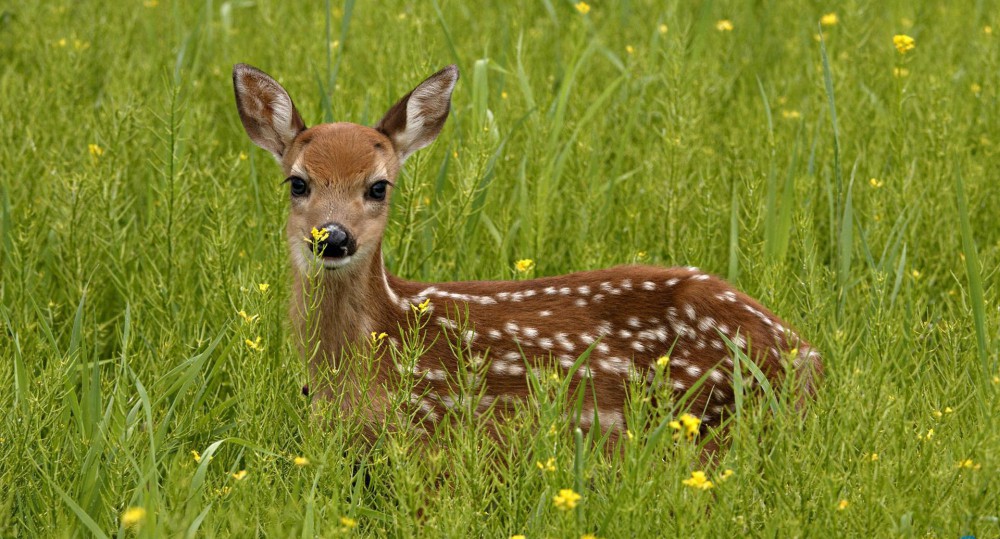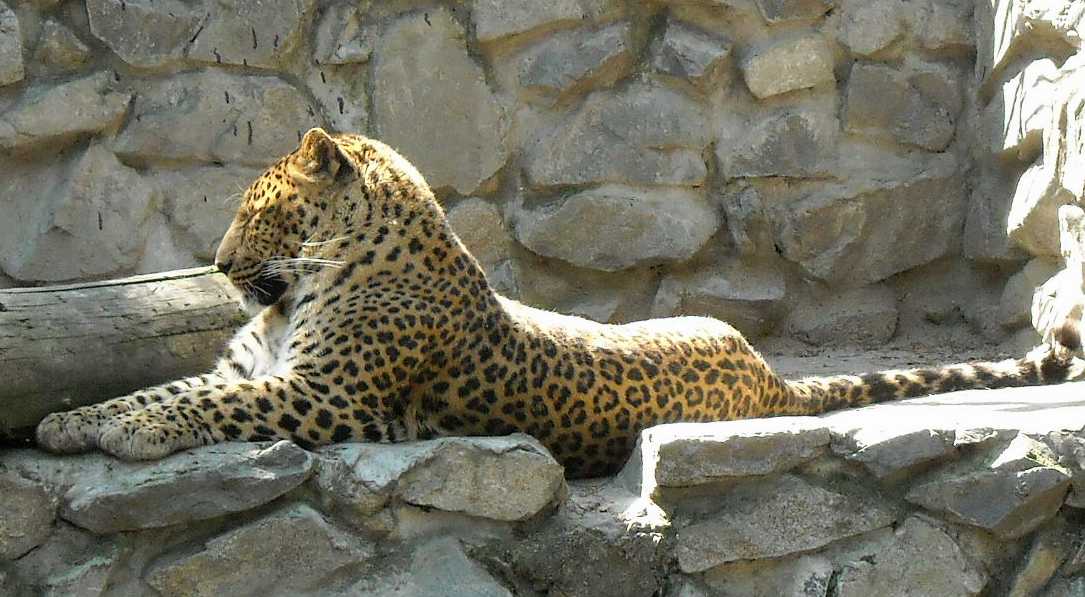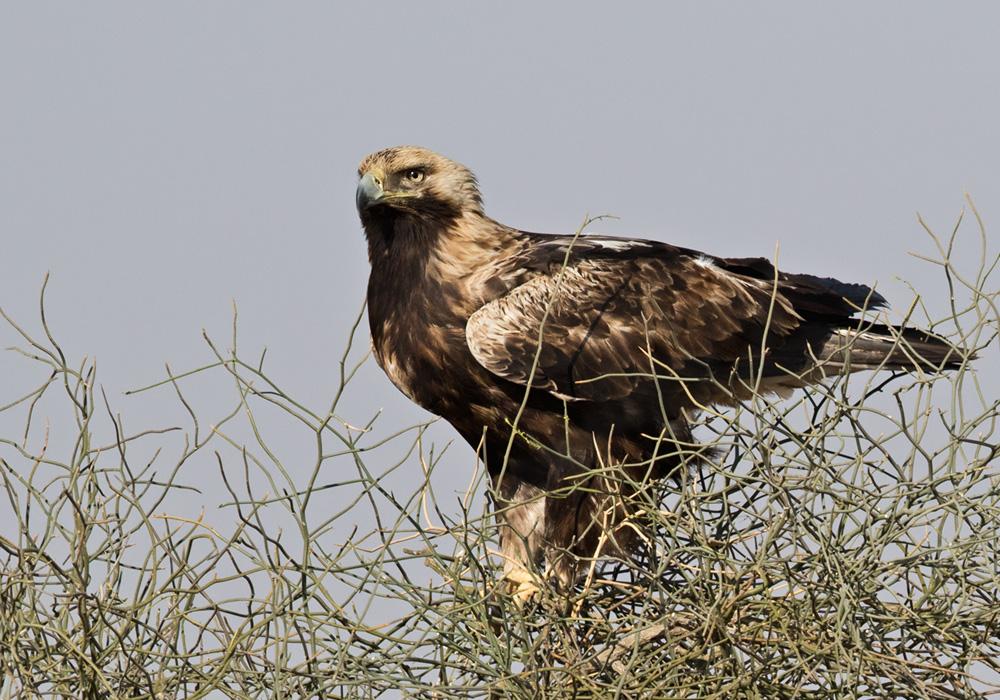"BIG FIVE"
At the initiative of Leyla Aliyeva, the founder and head of the IDEA public association, in 2012, five endangered animal species were identified in our region and the concept of the “Big Five” of the Caucasus was developed. Since then, the Public Association IDEA has been taking practical measures to protect and increase the number of endangered species of fauna.

Jeyran / Gazella subgutturosa
Order: Cetaceans
Family: Bovids
Category and status: VU A2ad; II.1., II.4.
Distribution: Shirvan MP, Korchay reserve and a very small group live on the plains of Gobustan and Achinogur.
Habitat and lifestyle: wormwood, saline deserts, and semi-desert landscapes. The periods of mating (November, December), gestation (January-May), and birth (from late April to mid-June) are their reproductive characteristics. The gestation period is about 5-5.5 months. Sexual maturity in females is 7-19 months, in males 1.5-2.5 months. The main components of the diet are grasses, grains, salt marshes, and perennial shrubs. When there are problems with fresh water, they also use snow and saltwater.
Quantity: On average, up to 7000 gazelles.
Restrictive factors: Poaching, grazing of domestic animals in their habitats, mowing of pastures and occupation of habitats, arson
Protection Measures Taken: As part of the landmark IDEA project "Reintroduction of Gazelles to Historic Places in the Caucasus", 150 gazelles were released into their historical habitats in Azerbaijan and Georgia. Note that the project was launched by the Heydar Aliyev Foundation in 2010 and was successfully continued by the latter after the creation of IDEA. The goal of the project was to increase the number of gazelles in the region and return them to the areas where they used to live, but for some reason left them. The public union IDEA and its project partners — the Ministry of Ecology and Natural Resources and the World Wildlife Fund (WWF) — regularly monitor the adaptation of gazelles released into the wild. Measures to protect gazelles have led to the restoration of the population of this species and even an increase in its number from 2,000 to 7,000.

Leopard / Panthera pardus ciscaucasica
Order: Predatory
Family: Felines
Category and status: NT; II.3.
Distribution: Studies over the past 10 years have shown that leopards live in the forests of Hirkan, Zangezur Range, Daridag, Nehramdag, and Darasham, as well as the Akhar-Bahar range north of the Mingachevir reservoir.
Number of individuals: About 17 individuals live on the territory of the Republic
Limiting factors: Direct oppression by people and a sharp reduction in the number of basic components of the diet.
Measures taken by IDEA to protect: As part of the protection of the leopard, the IDEA Public Association, together with its international and local partners, annually organizes a number of public awareness events, including summer camps for schoolchildren, scientific seminars, and master classes for students, competitions for young people, etc. In addition, in order to raise the international community's attention to Caucasian leopards and mobilize efforts to protect them, the Caucasian Cats Summit was organized in Baku in May 2014 at the initiative of the IDEA public association. The summit on the protection of Caucasian leopards, in addition to the world's leading experts in the protection of cats, was also attended by representatives of such international organizations like the United Nations Environment Organization (UNEP), representatives of the World Wildlife Fund (WWF), Panther organization, representatives of the Smithsonian Institution, London Zoological Society and Harvard University, as well as scientists from Azerbaijan. Experts and representatives of influential international organizations delivered lectures and held discussions on this topic. The summit was the first significant step and starting point for the protection of Caucasian leopards. Following the summit, the Zoological Society of London (ZSL) prepared a report on the protection and growth of the leopard population in Azerbaijan and made a number of valuable recommendations in this regard. Also, the Public Union IDEA created a working group consisting of specialists from the Ministry of Ecology and Natural Resources and the WWF representative office in Azerbaijan. Based on the above-mentioned NLB report, the working group developed an Action Plan and a corresponding roadmap for the project “Restoring Leopard Numbers in Azerbaijan”. Currently, international experts are analyzing the possible directions of the project. It should be noted that leopards are listed in Appendix 1 of the CITES Convention.
Brown Bear / Ursus arctos
Order: Carnivores - Carnivores
Family: Bearish
Category and status: LC; II.3.
Distribution: Greater and Lesser Caucasus, Talysh mountains, foothills.
Habitat and Lifestyle: The habitat encompasses both forested and rocky mountainous areas.
Its food is of vegetable and animal origin, depending on the season. The mating season is in May-July. The gestation period lasts 6-8 months, including the latency phase. Babies are born in January-March during hibernation. They can usually give birth to 2-3 and sometimes 5 puppies. The lactation period can last 18-30 months, while the mother is involved in the growth and learning of the babies.
Quantity: There are about 500-700 individuals.
Limiting factors: Poaching and habitat loss.
Safeguards: Included in CITES Appendix 2.

Gray Wolf / Canis lupus
Order: Predatory
Family: Canids
Category and status: At present, the number is satisfactory.
Distribution: Gray wolves predominate in the less temperate regions of Europe and Asia. It is found in all regions of our country, but most of all wolves are found on the Kursk plain, on the shores of the Red Tree Bay, in the Zagatala-Lagodekhi nature reserve.
Habitat and lifestyle: Wolves are monogamous animals. Mating takes place in winter. The gestation period is about 65 days. In April-May, the she-wolf gives birth to 4-8 cubs. Six-month-old wolves can already feed themselves. The entire herd participates in the feeding and rearing process. Wolves are mammals. They hunt artiodactyls, rodents, and rabbits. In summer, they feed on birds, as well as berries and eggs.
Quantity: In 2001, the number of wolves in Azerbaijan was about 988 individuals. In 2010, 5,109 people were registered. According to the results of last year, about 150,055 wolves live in Azerbaijan.
Limiting factors: Poaching
Safeguards: Included in CITES Appendix 2.

Eagle Imperial Eagle / Aquila heliaca
Order: Hawk-shaped
Family: Hawk
Category and status: VU A2ad; II.1., II.4.
Distribution: Nests in the foothills, and inhabits the steppe part of Azerbaijan
Habitat and way of life: Does not breed and gives birth in places with rocks, ravines, and rare trees. Arranges nests in April, lays 2-3 eggs per year, incubation lasts about 43 days. At the age of 55-60 days, the chicks rise on the wing but do not leave the nest. The male carries food, the mother feeds the chicks. They mainly feed on carrion, but at the same time, they get their own food by hunting small mammals and birds, even predatory ones.
Quantity: According to the Red Book, only 12 pairs of birds were recorded until the end of the twentieth century, which were numerous in the mid-twentieth century and rare after 1970. The risk of extinction has increased over the past 10 years. During the breeding season (May-July), only 5 pairs of birds were recorded: Turyanchay State Nature Reserve 1, a town in the foothills of the Caucasus 2, Zuvand 2 Reserve.
Limiting factors: For many years it was considered a harmful predator and therefore a purposeful hunt for extermination was carried out, the loss of places suitable for nesting due to deforestation, a decrease in the amount of food supply.
Protective Measures Taken: Hunting prohibited. Listed in the Red Book of the Republic. Listed in CITES, Berne, and Bonn conventions. Protected internationally.



